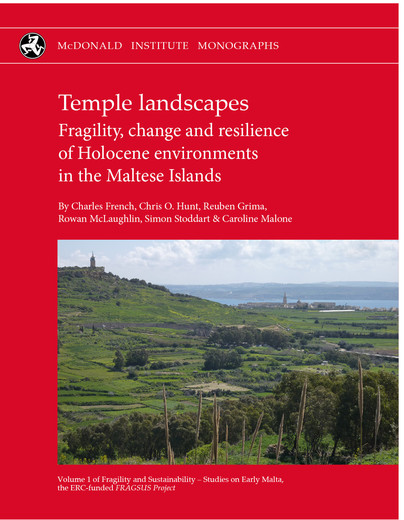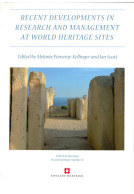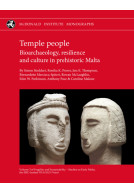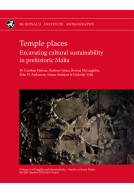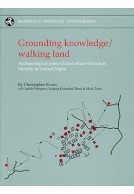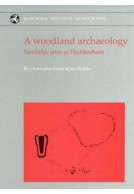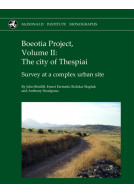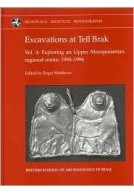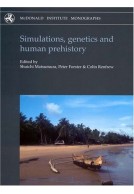Temple Landscapes (Hardback)
Fragility, change and resilience of Holocene environments in the Maltese Islands
Imprint: McDonald Institute for Archaeological Research
Series: Fragility and Sustainability - Studies on Early Malta, the ERC-funded FRAGSUS Project
Pages: 484
ISBN: 9781902937984
Published: 31st December 2020
Script Academic & Professional
Series: Fragility and Sustainability - Studies on Early Malta, the ERC-funded FRAGSUS Project
Pages: 484
ISBN: 9781902937984
Published: 31st December 2020
Script Academic & Professional
You'll be £65.00 closer to your next £10.00 credit when you purchase Temple Landscapes. What's this?
+£4.99 UK Delivery or free UK delivery if order is over £40
(click here for international delivery rates)
Order within the next 4 hours, 35 minutes to get your order processed the next working day!
Need a currency converter? Check XE.com for live rates
(click here for international delivery rates)
Order within the next 4 hours, 35 minutes to get your order processed the next working day!
Need a currency converter? Check XE.com for live rates
The ERC-funded FRAGSUS Project (Fragility and sustainability in small island environments: adaptation, cultural change and collapse in prehistory, 2013-18), led by Caroline Malone (Queens University Belfast) has explored issues of environmental fragility and Neolithic social resilience and sustainability during the Holocene period in the Maltese Islands. This, the first volume of three, presents the palaeo-environmental story of early Maltese landscapes.
The project employed a programme of high-resolution chronological and stratigraphic investigations of the valley systems on Malta and Gozo. Buried deposits extracted through coring and geoarchaeological study yielded rich and chronologically controlled data that allow an important new understanding of environmental change in the islands. The study combined AMS radiocarbon and OSL chronologies with detailed palynological, molluscan and geoarchaeological analyses. These enable environmental reconstruction of prehistoric landscapes and the changing resources exploited by the islanders between the seventh and second millennia bc.
The interdisciplinary studies combined with excavated economic and environmental materials from archaeological sites allows Temple landscapes to examine the dramatic and damaging impacts made by the first farming communities on the islands' soil and resources. The project reveals the remarkable resilience of the soil-vegetational system of the island landscapes, as well as the adaptations made by Neolithic communities to harness their productivity, in the face of climatic change and inexorable soil erosion. Neolithic people evidently understood how to maintain soil fertility and cope with the inherently unstable changing landscapes of Malta. In contrast, second millennium bc Bronze Age societies failed to adapt effectively to the long-term aridifying trend so clearly highlighted in the soil and vegetation record. This failure led to severe and irreversible erosion and very different and short-lived socio-economic systems across the Maltese islands.
Customers who bought this title also bought...
Other titles in the series...
Other titles in McDonald Institute for Archaeological Research...







